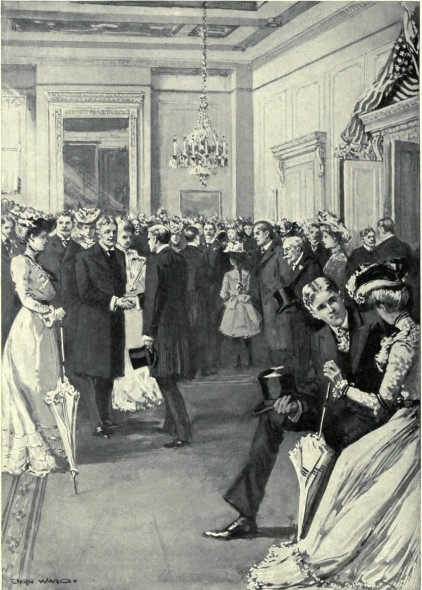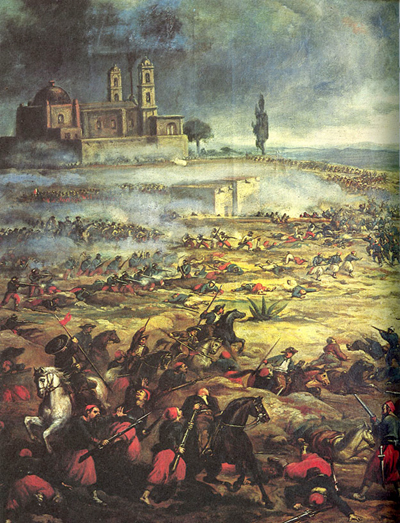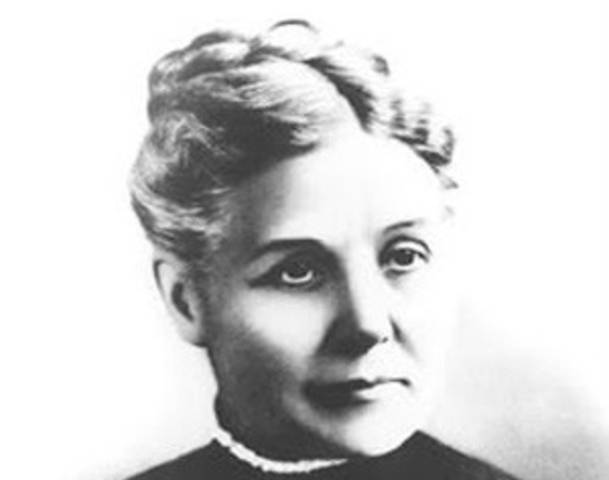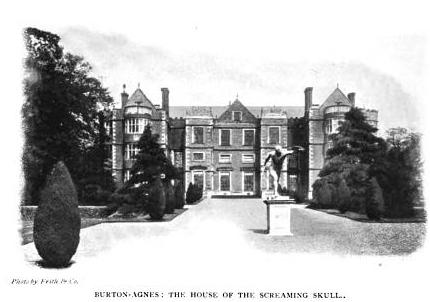
It is not easy to say offhand which is the most famous of all the haunted houses of the kingdom, if one regards them strictly from the point of view of their reputation for ghostliness. But perhaps we should not be far wrong if we gave the pre-eminence for mystery to Glamis Castle, whose spectral traditions, on account of their very weird and hidden nature, have taken strong hold upon the public mind.
Most haunted houses have their ghostly story well known, but that of Glamis remains a secret. What is the nature of the spirit or spirits that one finds here connected with the old house? Only three people know; only three people may know at the same time. Of these the living Earl of Strathmore and Kinghorne, who is the representative of the family, is one; the next heir is the second, and the steward of the estate is supposed to be the third. According to popular belief, all these three persons are sworn never to divulge the secret of the haunted room, and so there only remain as solutions of the mystery the strange tales which have at times been whispered round to satisfy the public imagination.
The most generally received version is that the crypt, which is kept shut from ordinary observation, is the scene of the ghostly appearances. It is said that on a certain night each year the three gentlemen mentioned have to repair there at a stated hour, when they behold the extraordinary sight of Earl Beardie—one of the Crawfords of olden days—playing cards with ghostly companions, which penance he has to undergo till the Day of Judgment, on account of a foul crime he committed in this very room whilst having a game of cards.
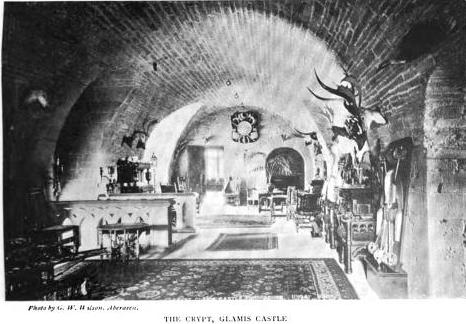
Another version locates the haunted apartment in a wing of the tower, where there certainly is a small room whose entrance is only known to three persons, and which entrance has often been sought by inmates and visitors of the house, but hitherto always in vain. The story of Earl Beardie, however, is then repeated substantially of this room, practically the same in detail.
Many a time has the heir in the past declared that he would disclose the mystery on entering on the earldom, but at the critical time he has always drawn back, and the secret has remained a secret still.
However one regards the tale, there is without doubt something mysterious connected with Glamis, a secret that the three folks spoken of share between themselves, and which is jealously guarded from the outer world. Glamis Castle has many strange historic and gruesome tales belonging to it, but this one about the dead earl is the strangest and most weird.
Next to Glamis the most curious account of a ghostly appearance has perhaps its location in Windsor Castle. Outsiders laughed and pooh-poohed, even lately, when the story was told in several quarters; but those closely connected with Windsor know well whether it is regarded as “fancy” or not by those immediately concerned. There had been for many decades reports that at various periods the spirits both of Queen Elizabeth and of Charles I. frequented certain portions of the castle. But the present Royal Family, even more than most officials at Windsor, gave little credence to such stories.
It is said, however, that some few years back the late Empress Frederick was seated reading quietly, in broad daylight, in the library, which, as is well known, was one of her favourite haunts when at the castle. Suddenly she looked up, and was simply amazed to observe near the door the figure of a gentleman, dressed in the attire of the Cavaliers, standing as if meditating. When he raised his head and turned his face towards her, she recognised the figure at once as that of the Stuart King Charles I. She is reported to have neither spoken nor risen, but to have closely watched the strange apparition until it moved softly away and disappeared through the door, where, after following it, she could discern nothing more.
Queen Elizabeth’s spirit is said to frequent the Terrace on certain nights, and the Windsor folk tell you with bated breath that no less a person than Princess Beatrice has seen the Tudor Queen there more than once! Some say the first time was when the Princess was only a girl, and the last not many years ago. Whatever truth there may be in these reports, (and they have been made on very high authority before to-day,) one cannot but regard Windsor Castle as the beau-ideal spot for ghosts. Its wonderful history, its former inmates, its unique situation, all make it just the place where one might expect to meet the spirits of departed great personages, if anywhere at all in England.
There are surely few river-lovers who do not know Ham House, the grand old residence of the Earl of Dysart, at Petersham, on the banks of the Thames. The lovely slopes of the river, the fine trees between the house and the Thames, the mysterious groves and walks of this famous stately home of England,—how many tourists and fair rowers on the river have they not at one time or another allured and enticed to stay for an hour or two in contemplation and enjoyment of the beautiful scene around!
Ham House is reputed to be one of the very few places really tenanted by authentic ghosts. They are there to-day, and may be seen by the most sceptical,—say the good folk of Ham,—if only the Earl will give permission. They are not the ghosts of any particularly historic or interesting persons of old ; no one seems to know their identity at all, or why they appear. But that appearance is above suspicion, rumour says. They have been seen times and again by the family and visitors.
And truly Ham House has several features that lend colour to such statements. It looks like a spirit-ridden place; it is a true Elizabethan mansion, with mystery written large upon its very face! Those big gates which make the front entrance of Ham House are said never to have been opened but once since the day when they closed upon Charles II. for the last time. That once was for a former Ix)rd Granville, whom the then earl specially desired to honour. There is some traditionary reason for their being always shut. What is that reason?
In Ham House Charles II. used to sit with the famous Cabal Ministry. Here are still the furniture and articles used by the great Lauderdale and his duchess ; by Buckingham, Ashley, Arlington, and Clifford. Are the ghosts of which one hears those of these celebrated characters? Ham House is a mysterious place in itself, and its ghostly inmates to-day make it more mysterious still.
To all Yorkshire is known the legend of the “Screaming Skull ” of the Boyntons. There is no make-up about this story; it has been told by members of the family themselves times without number, and the “Screaming Skull” exists to-day. The Boyntons live at Burton-Agnes, in the East Riding, and the present head of the family is Sir Henry Boynton, Bart.
The Hall itself is a fine Elizabethan mansion, containing many noted and curious carvings both in wood and stone. The “Skull ” which has played such strange parts in the career of the family is kept (or was) under a glass case in the entrance-hall, securely fastened. According to tradition, if the skull is removed from that place for any purpose whatever, bad luck will follow the family, and death pursue them far and wide. In addition to this, a succession of unearthly shrieks is said to be emitted periodically by the skull itself, which are calculated to cause fear in the stoutest breast; and the shrieks only cease when the skull is returned again to its resting-place.
That the legend is universally believed round the district, and that the Boyntons take extraordinary care to keep the relic just where it has so long reposed, do not admit of a doubt. That terrible fates have pursued those who, strong-minded and unbelieving, have dared to remove the skull, is also, if report can be credited, beyond question. The skull is said to be that of a former
female member of the family who, on account of some quarrel, declared that she would never be buried and forgotten until a wrong in her life had been avenged.
But as it is to-day impossible for the present generation of Boyntons to avenge such said wrong, even if they wished, the skull is likely to have to stay where it was first placed when, after the said lady’s burial, it turned up on her grave grinning diabolically at those who had buried it! In vain was it reburied; it always ” screamed ” and turned up again later, until at last it found rest and peace after being placed in the hall which had been the former apartment of its owner. Here, so we are told, it lies quiescent and harmless. “But surely the present generation does not believe such a tale, and could bury the skull?” says the sceptic. Well, the doubter had better ask the reigning head of the family if he is willing to do so.
Rosslyn Castle, the home of the Earls of Rosslyn, has some claim to our notice, seeing that its “White Lady” has obtained more than a passing importance. The “White Lady of Rosslyn” is supposed to be a bad omen for the reigning lord, as her appearance is said to presage his death soon after. It is a family tradition that has its counterpart in many other stately houses, both in this country and on the Continent, a similar “White Lady” being said always to herald any disaster or death in the family of the Hohenzollerns, of whom the head is the present German Emperor. Another message of death at Rosslyn is said to be conveyed to those who see it by the appearance of an unearthly light in the chapel. Indeed, this light is said to appear simultaneously, as a rule, with the ghostly “White Lady.” Whatever truth there may be, either in the legend or in its mystic surroundings, I do not pretend to say.
But all who are acquainted with the charming and talented family of St. Clair Erskine will hope that it may be a very long time indeed before the “White Lady” is seen by any of them. Marlow and Bisham Abbey—what glorious memories of boating on the Upper Thames do the names recall! When you stopped rowing to have tea near pretty Bisham Abbey, did you know that this fine old place was one of the noted haunted houses of England? Almost certainly not; yet such is the truth. If you can get a look into the house, and should see the portrait of Lady Hoby, Sir William’s wife of old, you will be at once struck by the deathly pallor of her face and hands. It is an awful, bloodcurdling story, the one that you will be told of this Lady Hoby. She is, like the Earl Beardie at Glamis, condemned to pay the penalty of a terrible deed till the Last Day. Her little son William was writing, so report says, and blotted his book.
The mother, who had a shocking temper and was most strict, beat him hard and long, until at length the poor child died from it. Then ensued an awful scene. Lady Hoby was filled with repentance and horror, and in vain tried to wash her son’s blood from her guilty hands. Her whole life was passed in fruitlessly trying to do this. And now, in our twentieth century, on the anniversary of that fatal duty, the spirit of a woman in widow’s weeds, with wild, horrified face, passes through the rooms of Bisham at midnight, appalling those who see it, because there is in front of the figure a ghostly basin of water, and in this the wretched mother keeps dipping her hands and looking at them, only to find that the marks of blood still remain unwashed away! Thus Bisham can boast of a fitting counterpart to the role of Lady Macbeth, and so takes its place amongst the haunted houses of our land.
— The Lady’s Realm (1902)

